In a prospering yet cutthroat marketplace like Amazon, protecting yourself legally (and avoiding infringement on others’ intellectual property) is a confusing yet important step to navigate.
Fortunately, we had Marc Karish join us for Session #4 of the Million Dollar Case study. Marc is a patent attorney with over 15 years of experience working in intellectual property law. He did a great job laying out the fundamentals of intellectual property to help guide us through potential pitfalls, whilst also protecting ourselves legally.
Here is a full recap of the video:
And the slides that Marc reviewed:
Note: Marc did not give specific advice. As the nature of intellectual property law can get very specific, this session serves as an overview, but is not in itself legal advice. Alright, now that that disclaimer is done, let’s get to it!
There are three components of Intellectual Property, which were covered individually: Trademark, Copyright, and Patents.
Trademarks:
Taking the definition from the US Patent And Trademark Office (USPTO):
“A trademark is a word, phrase, symbol or design, or a combination of words, phrases, symbols or designs, that identifies and distinguishes the source of the goods of one party from those of others.”
Essentially, Trademarks exist to protect the marketplace, so consumers can identify where the product comes from, so people can’t sell products using identical marks.
Trademarks can exist in some of the following ways:
- Words – Apple, Nike, Adidas, Exxon
- Letters – AAA
- Slogans – “Just do it”
Additionally, there can be a combination of visual elements, combining a word and symbol mark, like “White Elephant”:
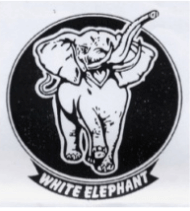
Trademarks can also come in the form of Trade Dress, which is a product shape that has been used long enough that people have come to associate that shape with that company. A signature example of is the Coca-Cola bottle, which is a very distinctive and recognizable shape:
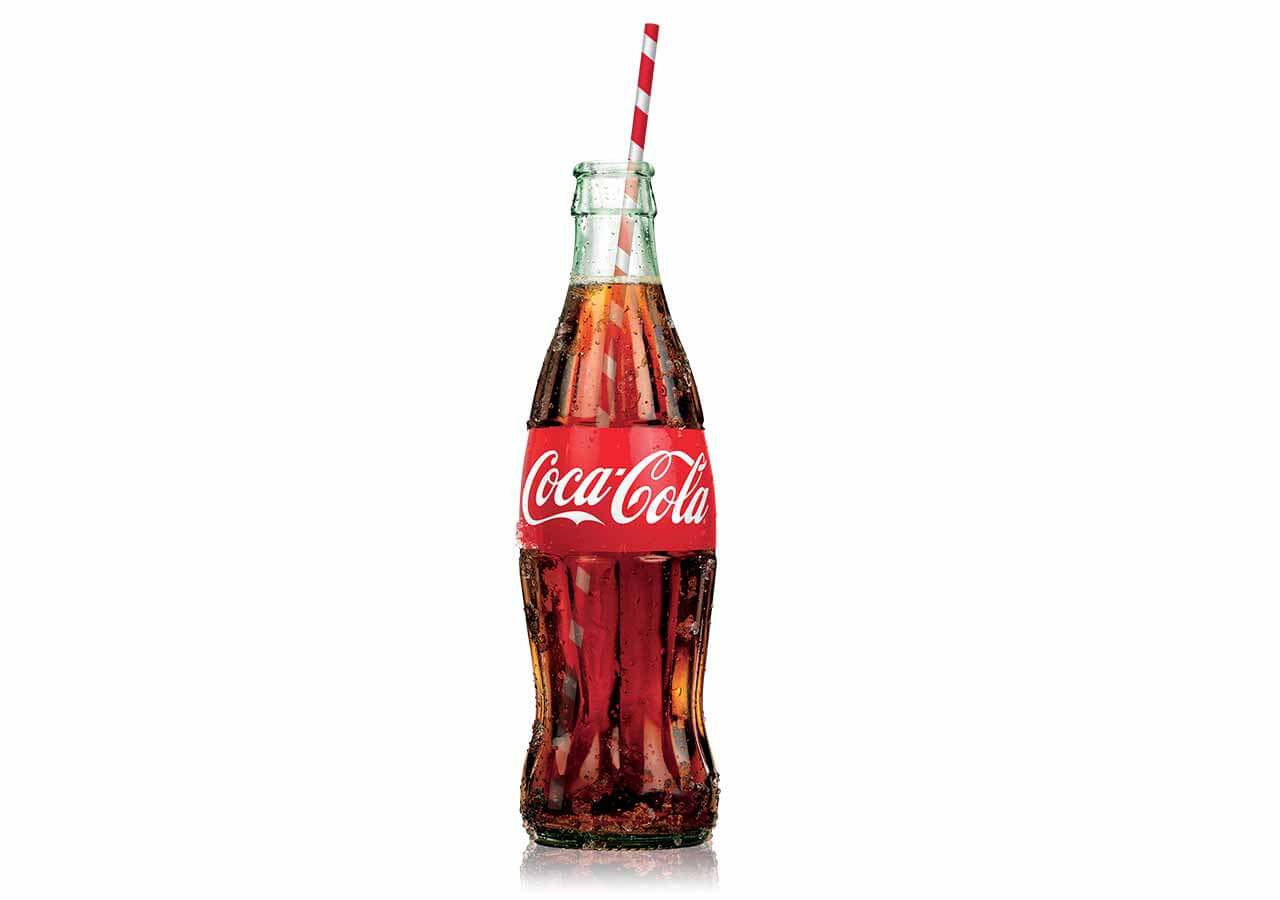
How do you research an existing trademark?
Simply head to the USPTO.GOV site, and search in the Trademark Electronic Search System (TESS):
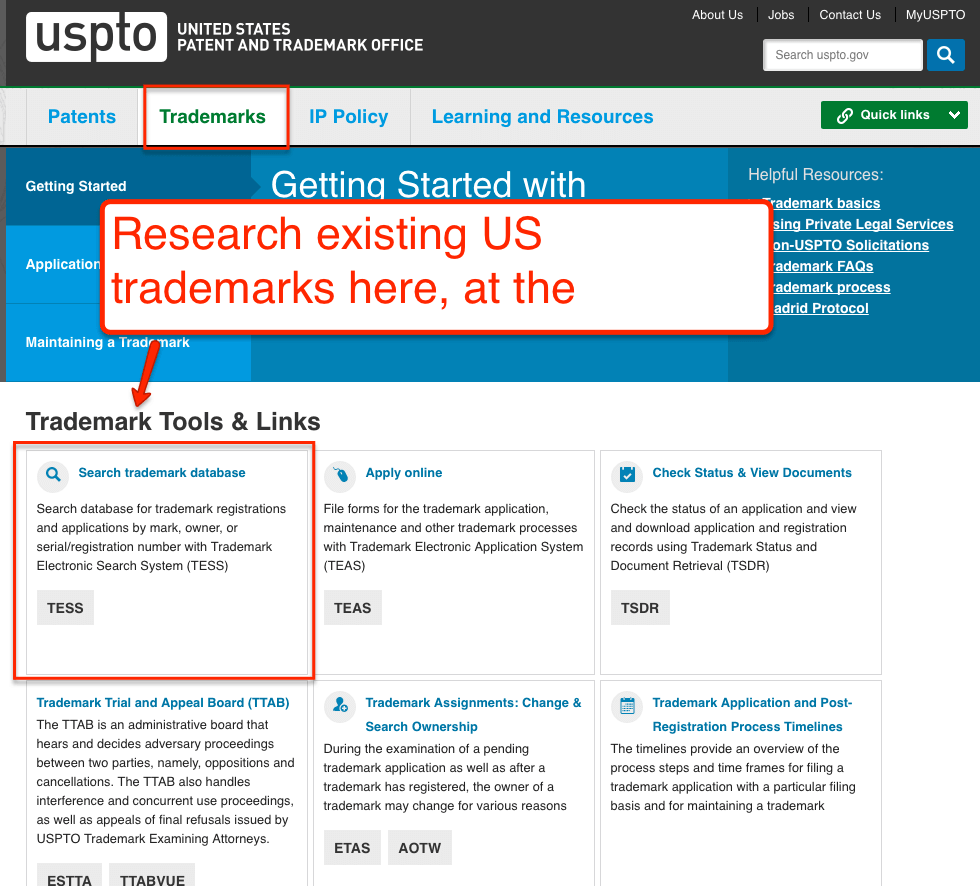
From here, you can search using various methods; using basic design marks, ownership, word or design marks. When you are searching for trademarks, you want to make sure that your trademark is not going to be too similar to cause confusion.
Questions that you want to ask yourself are:
- How similar does my brand look to the existing trademark?
- Do they sound similar?
- How similar are the products in price or function?
If you are going to adopt a new trademark for your product, you are going to want to ensure someone’s not using the similar sound and function, as that could mean that you are infringing on an existing trademark.
An interesting caveat that Marc mentioned is that some trademarks are registered with the states (and therefore won’t be found on USPTO.GOV, or aren’t even registered at all, but have been used long enough that they can be enforced against you if needed. If it comes to such a state of ambiguity, it’s always safe to heed the advice, ‘consult with an attorney.’
Copyright
The government uses the following definition:
“Copyright is a form of protection provided by the laws of the United States. (title 17, U. S.Code) to the authors of ‘original works of authorship,’ including. literary, dramatic, musical, artistic, and certain other intellectual works.”
This means that the photos, graphics, text, and other creative work used in the product, packaging, or website is protected by copyright.
This gets tricky with selling on Amazon, as there are many products and listings that look nearly identical. However, if you copy some packaging or a manual, you are violating copyright law. Moreover, if you are inspired by someone’s product, they automatically have protection on the images, language, and packaging.
If you violate an existing copyright, the rightful copyright owner can go after you, and does not necessarily need to register everything in order to enforce copyright laws.
The good news…
Once granted, a copyright lasts a long time. In general, it is the life of the author plus at least 70 years.
The good news about copyright infringement is that it is fairly easy to avoid. Don’t copy someone else’s work! If you created it, whether the image, text or graphics, you will be OK.
An important note for those who have employees: if you have someone else produce the copy for you, under contract, make sure to have written an assignment of all copyrights to you so that down the road you are not accused of copyright infringement. This is very simple to execute. But make sure that you get it in writing to avoid issues down the line.
Patent
Patents protect the idea behind the product. By definition:
“A patent for an invention is the grant of a property right to the inventor. Patents are granted for new, useful and non-obvious inventions for a period of 20 years from the filing date of a patent application, and provide the right to exclude others from exploiting the invention during that period.”
The notion behind patents is that in exchange for sharing the useful, non-obvious invention, patent owners are granted a monopoly for a given amount of time.
The benefit of a patent is that it grants patent owners exclusive rights to sell a product for a set amount of time. Therefore, the inventor gets market share, profit margin, and marketing benefit during the life of the patent.
Patents have a term from 17 years of issuance or 20 years from filing, to be safe you will just assume the longer of the two. There are two types of patents: utility patents, and design patents.
Utility Patents
Utility Patents protect the function or feature of the product.
A utility patent is defined by the “Claims” at the end of the patent, which defines what is protected and covered by the patent. Several things have to be included in order to avoid infringement.
For example, here are the claims of a patent for a “baby hooded towel” found on Google Patents search:
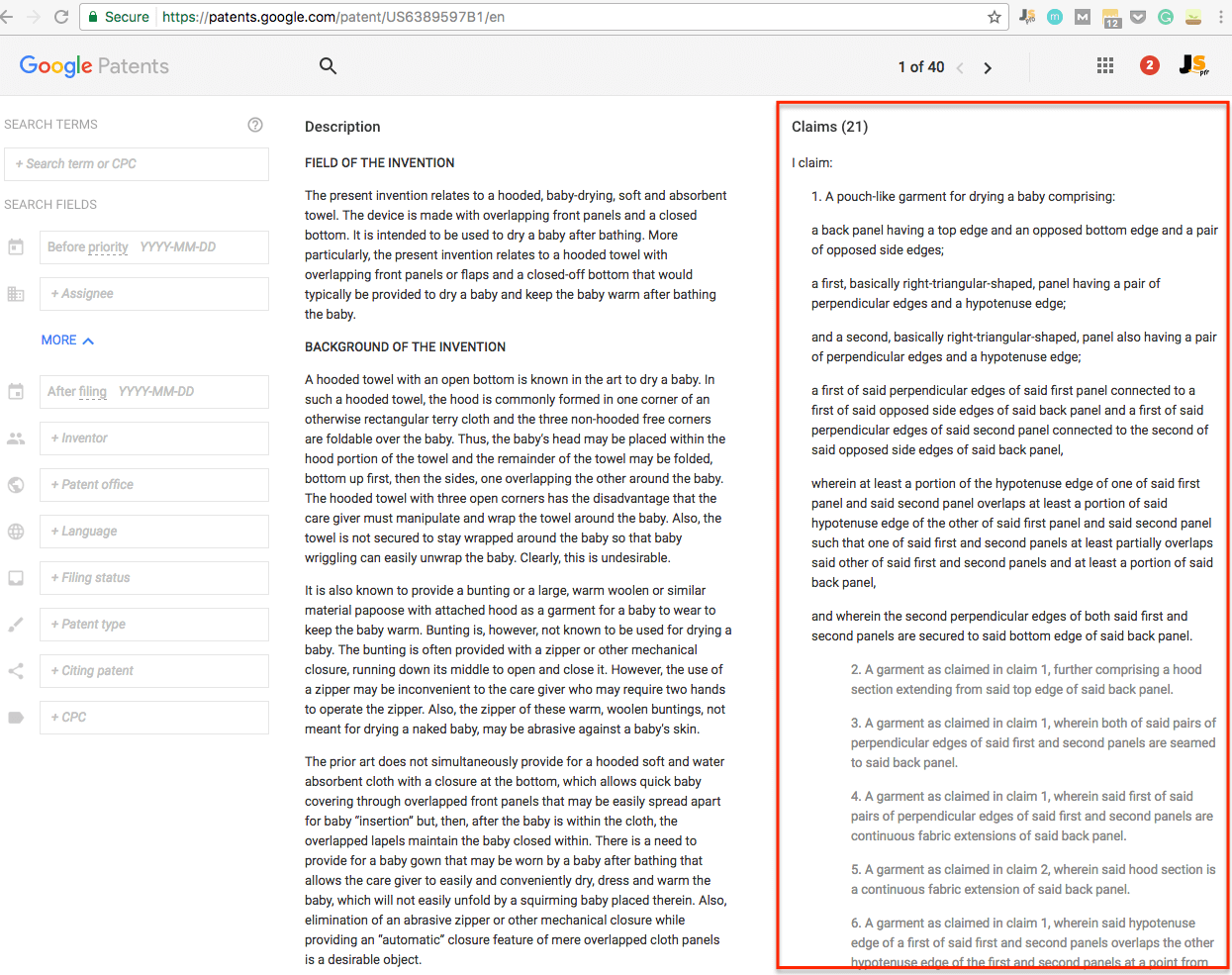
In order to be held in violation of a patent, you have to have all of the elements of one claim. However, if your product does not infringe on every element of a single claim, you may not be infringing. Again, it is best to consult an attorney to review the fine details here. This is especially the case if it is hard to interpret or understand the patent, and you need help deciphering the legal language.
Design Patents
Design Patents are intended to protect the appearance of the product. Marc suggests that Design Patents are frequently obtained for automotive parts, shoe designs, but not exclusive to this use case. They are much more specific and easier for people to get. To “design around” these patents, you more or less just need a design that doesn’t look like the patented design. However, it would be OK if the product served the same purpose.
How do you do patent research?
The best place to start your patent research is by checking for the patent number on the product, packaging, or website. From there, you can investigate on USPTO.GOV or Google Patents, searching for the name of the company, assignee, or inventor.
However, remember that there are limits and nuances to a self-conducted patent search if you are not a patent or intellectual property attorney.
How much does this legal protection cost?
- Copyrights – Filing a copyright registration is inexpensive. The fees run $35-$55 on Copyright.gov, and might be $250-$500 if you hire an attorney to do it.
- Trademarks – Filing a trademark can run about $1000, which includes the filing fee for one class of goods.
- Searching for a patent and conducting patent research could run $2000-$3000. Depending on the technology that is being patented, and the research necessary.
- Filing a patent – This can cost $7500 to $9000! Plus 50-100% of filing cost to get it past for applying for a patent. Additional fees may include additional applications and drawings that need to be done to file the patent.
The key takeaway:
Above are the steps to get you started with your IP research. However, if you have specific questions on your particular product or idea, it is best to reach out to an intellectual property attorney. Marc’s contact info can be found on his firm’s website here.
I hope that this recap was helpful. This is very nuanced content, so if you get a chance to watch the full video recap, you can hear exactly what Marc said!
Don’t forget to check out the next Session (#5) of the Million Dollar Case Study. Greg gives you an over-the-shoulder rundown of outreach to suppliers on Alibaba. Find the full recap and replay here.
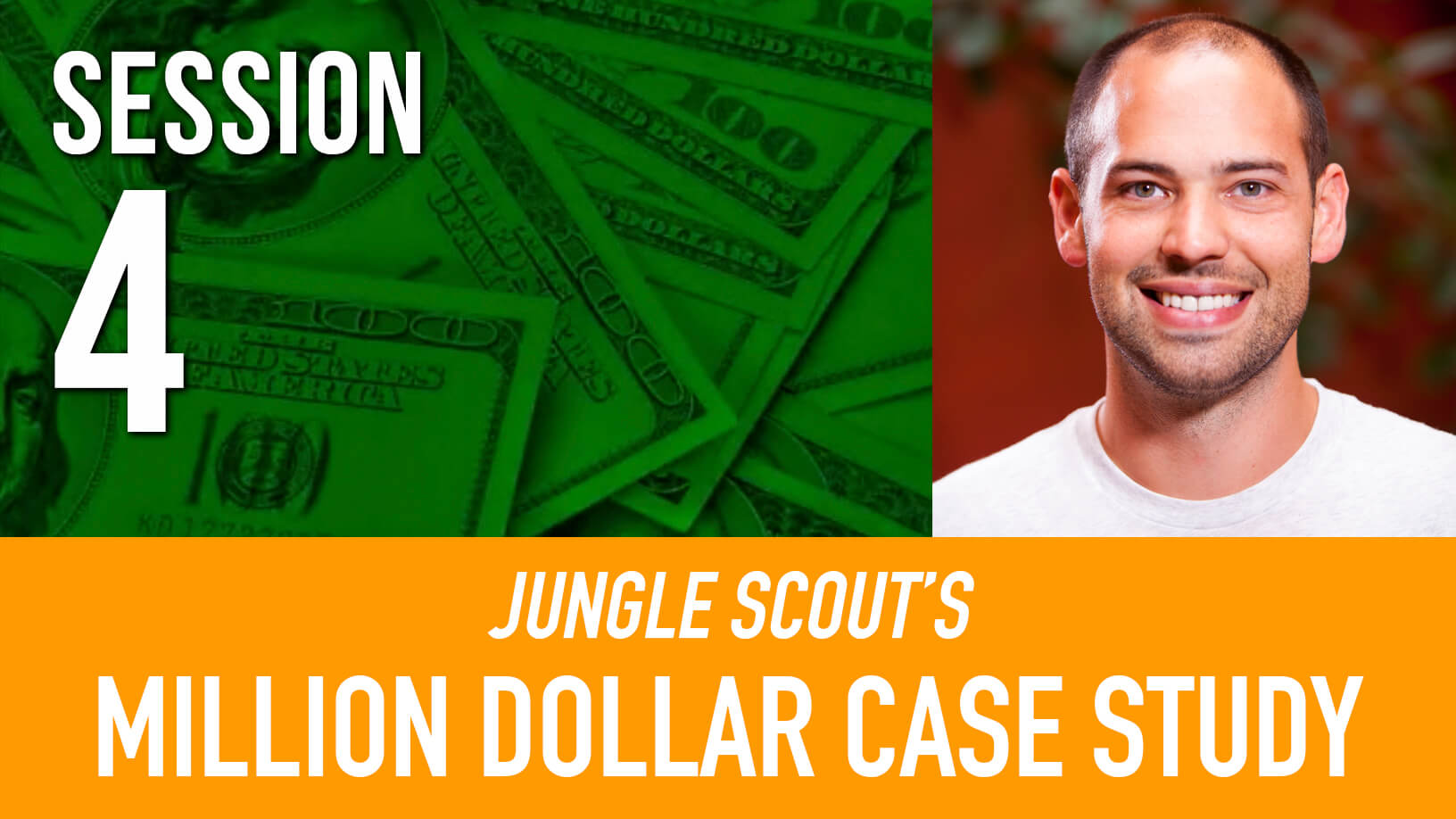
 20 Comments
20 Comments
20 comments on “The Million Dollar Case Study Session #4: Intellectual Property Research”